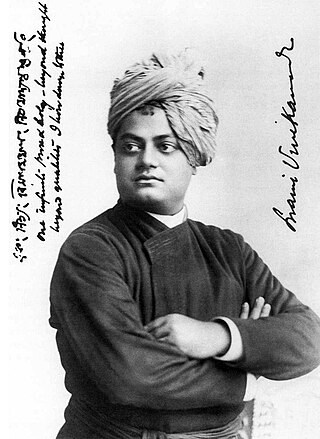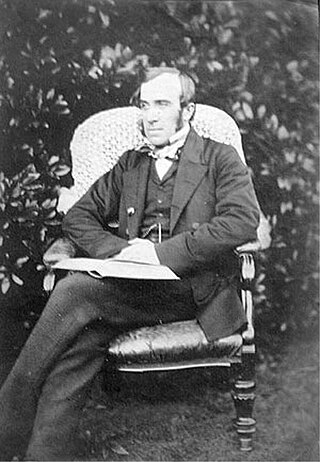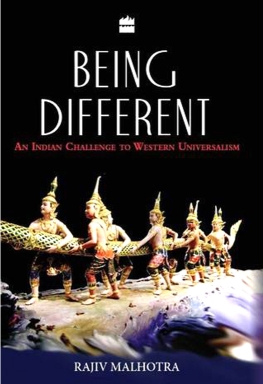
Sarvepalli Radhakrishnan was an Indian politician, philosopher, and statesman who served as the second president of India from 1962 to 1967. He previously served as the first vice president of India from 1952 to 1962. He was the second ambassador of India to the Soviet Union from 1949 to 1952. He was also the fourth vice-chancellor of Banaras Hindu University from 1939 to 1948 and the second vice-chancellor of Andhra University from 1931 to 1936. Radhakrishnan is considered one of the most influential and distinguished 20th century scholars of comparative religion and philosophy, he held the King George V Chair of Mental and Moral Science at the University of Calcutta from 1921 to 1932 and Spalding Chair of Eastern Religion and Ethics at University of Oxford from 1936 to 1952.

Swami Vivekananda, born Narendranath Datta, was an Indian Hindu monk, philosopher, author, religious teacher, and the chief disciple of the Indian mystic Ramakrishna. He was a key figure in the introduction of Vedanta and Yoga to the Western world and is credited with raising interfaith awareness, and bringing Hinduism to the status of a major world religion.

Arun Shourie is an Indian economist, journalist, author and politician. He has worked as an economist with the World Bank, a consultant to the Planning Commission of India, editor of the Indian Express and The Times of India and a Minister of Communications and Information Technology in the Vajpayee Ministry (1998–2004). He was awarded the Ramon Magsaysay Award in 1982 and the Padma Bhushan in 1990.
Vedanta, also known as Uttara Mīmāṃsā, is a Hindu philosophical tradition that is one of the six orthodox (āstika) schools of Hindu philosophy. The word "Vedanta" means "end of the Vedas", and encompasses the ideas that emerged from, or were aligned with, the speculations and enumerations contained in the Upanishads, with a focus on knowledge and liberation. Vedanta developed into many sub-traditions, all of which base their ideas on the authority of a common group of texts called the Prasthānatrayī, translated as "the three sources": the Upanishads, the Brahma Sutras and the Bhagavad Gita.

Advaita Vedanta is a school of Hindu philosophy and a Hindu sādhanā, a path of spiritual discipline and experience. In a narrow sense it refers to the oldest extant scholarly tradition of the orthodox Hindu school Vedānta, written in Sanskrit; in a broader sense it refers to a popular, syncretic tradition, blending Vedānta with other traditions and producing works in vernacular.

Sir Monier Monier-Williams was a British scholar who was the second Boden Professor of Sanskrit at Oxford University, England. He studied, documented and taught Asian languages, especially Sanskrit, Persian and Hindustani.

Religion in India is characterised by a diversity of religious beliefs and practices. Throughout India's history, religion has been an important part of the country's culture and the Indian subcontinent is the birthplace of four of the world's major religions, namely, Hinduism, Buddhism, Jainism, and Sikhism, which are collectively known as native Indian Religions or Dharmic Religions.
Indra's net is a metaphor used to illustrate the concepts of Śūnyatā (emptiness), pratītyasamutpāda, and interpenetration in Buddhist philosophy.

Anantanand Rambachan is a professor of religion at St. Olaf College.

Rajiv Malhotra is an Indian-born American, author and founder of Infinity Foundation, which focuses on Indic studies, and also funds projects such as Columbia University's project to translate the Tibetan Buddhist Tengyur.
Hindu studies is the study of the traditions and practices of the Indian subcontinent, and considered as a subfield of Indology. Beginning with British philology in the colonial period, Hindu studies has been practiced largely by Westerners, due in part to the lack of a distinct department for religion in Indian academia. Since the 1990s this has caused some dissent from Hindus, raising questions in academia about the role of Hindu studies in creating postcolonial images of India.

Invading the Sacred: An Analysis of Hinduism Studies in America is a book published in 2007 by Rupa & Co. which argues that there are factual inaccuracies in Hindu studies. The editors of the book are Krishnan Ramaswamy, Antonio T. de Nicolás, and Aditi Banerjee. The book has contributions from Arvind Sharma of McGill University, S. N. Balagangadhara of Ghent University, psychoanalyst Alan Roland, Yvette Rosser, Ramesh N. Rao, Pandita Indrani Rampersad, Yuvraj Krishnan, and others. Rajiv Malhotra played a large role in drafting most of the book's content. He stated that through this book, he intended to bring attention to, and provide a counter-argument to, the prevalent Freudian psychoanalytical critiques of Hinduism in the American Academy of Religion's RISA group. After the controversy surrounding Wendy Doniger's book The Hindus: An Alternative History erupted in India, the authors decided to make it freely available online as it critiques a major part of her work.

This is a bibliography of notable works about India.

Neo-Vedanta, also called Hindu modernism, neo-Hinduism, Global Hinduism and Hindu Universalism, are terms to characterize interpretations of Hinduism that developed in the 19th century. The term "Neo-Vedanta" was coined by German Indologist Paul Hacker, in a pejorative way, to distinguish modern developments from "traditional" Advaita Vedanta.

Being Different: An Indian Challenge to Western Universalism is a 2011 book by Rajiv Malhotra, an Indian-American author, philanthropist and public speaker, published by HarperCollins. The book reverts the gaze of the western cultures on India, repositioning India from being the observed to the observer, by looking at the West from a Dharmic point of view.
Jainism and Hinduism are two ancient Indian religions. There are some similarities and differences between the two religions. Temples, gods, rituals, fasts and other religious components of Jainism are different from those of Hinduism.

Unifying Hinduism: Philosophy and Identity in Indian Intellectual History is a book Andrew J. Nicholson on Indian philosophy, describing the philosophical unification of Hinduism, which it places in the Middle Ages. The book was published in the US in 2010 in hardcover, with a paperback edition appearing in 2014. An Indian hardcover edition was published by Permanent Black in 2011. The book won the 2011 award for Best First Book in the History of Religions from the American Academy of Religion, and has been reviewed in numerous professional journals.
This is a bibliography of literature treating the topic of criticism of Christianity, sorted by source publication and the author's last name.

Advaita Vedānta is the oldest extant tradition of Vedānta, and one of the six orthodox (āstika) Hindu philosophies. Its history may be traced back to the start of the Common Era, but takes clear shape in the 6th-7th century CE, with the seminal works of Gaudapada, Maṇḍana Miśra, and Shankara, who is considered by tradition and Orientalist Indologists to be the most prominent exponent of the Advaita Vedānta, though the historical fame and cultural influence of Shankara grew only centuries later, particularly during the era of the Muslim invasions and consequent reign of the Indian subcontinent. The living Advaita Vedānta tradition in medieval times was influenced by, and incorporated elements from, the yogic tradition and texts like the Yoga Vasistha and the Bhagavata Purana. In the 19th century, due to the interplay between western views and Indian nationalism, Advaita came to be regarded as the paradigmatic example of Hindu spirituality, despite the numerical dominance of theistic Bkakti-oriented religiosity. In modern times, its views appear in various Neo-Vedānta movements.












